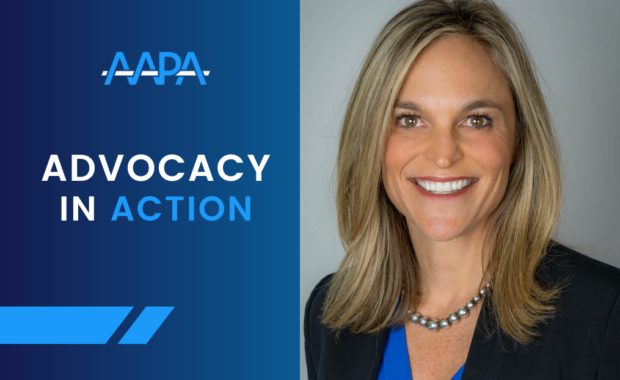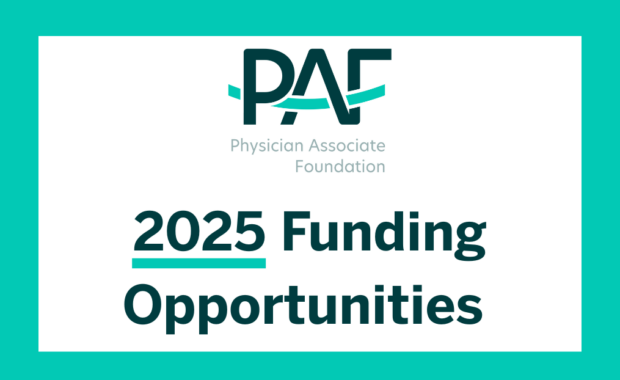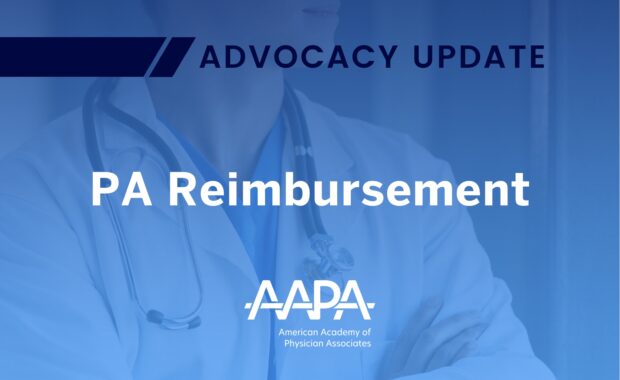Autism Spectrum Disorder: Not Just a Childhood Issue
Understanding ASD is Critical for Adult Patient Outcomes
April 25, 2019
By AAPA Research Department and Denise Rizzolo, PhD, PA-C
What is Autism Spectrum Disorder?
Autism Spectrum Disorder (ASD) is a common neurodevelopmental condition which is characterized by deficits in communication and reciprocal social interactions. The prevalence rates have been increasing over the past 20 years, according to the CDC, up from 1 in 150 in 2000 to 1 in 59 children with ASD in 2018.1 This increase may be impacted by improved provider education and earlier diagnosis, as well as the evolution of the diagnostic criteria in the DSM-5.2,3 ASD is found across genders, races, and socioeconomic groups although the incidence rate is higher in white male children.4,5 There has consistently been a higher prevalence among residents of neighborhoods with higher socioeconomic status and appears to be highest in white children.5
A cursory search of literature turns up a myriad of articles about diagnosis, treatment, and comorbidities associated with children with ASD. Even after children receive early intervention for deficits related to ASD, there will most likely be lingering communication issues that last into adulthood. There is little information on the manifestations of ASD in adulthood and limited research on occupational outcomes for adults with intellectual deficits with ASD.6-10
How manifestation of ASD changes from childhood to adulthood
Common symptoms of ASD in adults include:9
- Difficulty interpreting what others are thinking or feeling
- Trouble interpreting facial expressions, body language, or social cues
- Difficulty regulating emotion
- Trouble keeping up a conversation
- Inflection that does not reflect feelings
- Difficulty maintaining the natural give-and-take of a conversation; prone to monologues on a favorite subject
- Tendency to engage in repetitive or routine behaviors
- Only participates in a restricted range of activities
- Strict consistency to daily routines; outbursts when changes occur
- Deep knowledge of one particular topic, such as a certain branch of science or industry
With time, changes can be observed in the manifestations of ASD in children and adults.
| Children | Adults |
| Use of echolalia or repetitive speech | Improvement Seen |
| Stereotyped motor movements such as hand flapping or rocking | |
| Insistence of following routines and rituals | |
| Intense interest in one or more topics | |
| Difficulty with non-verbal social communications such as eye contact | Mixed evidence: Some improvements may be seen by adulthood, especially among those with greater interactions with non-disabled peers. |
| Challenges developing language and/or compensating with gestures or other nonverbal forms of communication | |
| Challenges engaging in social communication and sustaining conversations | |
| Difficulty engaging in reciprocal social interactions | No Change Seen |
| Difficulty sharing interests and being attentive to others | |
| Difficulty developing same-age peer relationships | |
| Presence of aggression or self-injurious behaviors or excessive over activity | Worsens Without Intervention |
| Presence of anxiety disorders and/or depression | |
| Presence of sensory hyper- or hypo-responsiveness | Unknown |
Table attributed to: Autism spectrum disorders in adolescence and early adulthood: Characteristics and issues10
What does this mean for PAs?
ASD is a life-long disorder that, depending on the severity of symptoms, differs in the intensity of care needed. Along with symptom management, ASD is often associated with co-morbid disorders that may require long-term care and monitoring. Epilepsy for example, co-occurs in 20-30% of autistic adults, and is even more common if an intellectual disability is present. Other disorders comorbid to those with ASD include gastrointestinal disorders, psychiatric disorders, and metabolic syndrome.11
Healthcare providers should understand that communication is critical to ensuring patient compliance which in turn leads to better patient outcomes.13 Understanding the communication needs of patients is one way to ensure optimum patient-provider communication. To this end, additional training on the characteristics of ASD and how to manage the condition may be beneficial, even if pediatric patients are not seen on a regular basis.
More Resources
- Autism Spectrum Disorder in the Clinical Setting
- CME session “Broadening the ‘Spectrum’ of Our Care: Key Evidence-based Pearls to Ease the Examination of Patients with Autism Spectrum and Developmental Disorders” (DV9021) at AAPA 2019
References
- Centers for Disease Control (CDC). Data & Statistics on Autism Spectrum Disorder. Centers for Disease Control Web site. https://www.cdc.gov/ncbddd/autism/data.html Accessed February 4, 2019.
- Hansen SN, Schendel DE, Parner ET. Explaining the increase in the prevalence of autism spectrum disorders: the proportion attributable to changes in reporting practices. JAMA Pediatr. 2015;Jan 1;169(1):56-62. doi: 10.1001/jamapediatrics.2014.1893.
- American Psychiatric Association. Diagnostic and Statistical Manual of Mental Disorders. 5th ed. Washington D.C.: 2013.
- Centers for Disease Control (CDC) Autism prevalence slightly higher in CDC’s ADDM Network. Centers for Disease Control Web site. https://www.cdc.gov/media/releases/2018/p0426-autism-prevalence.html. Updated April 26, 2018. Accessed February 1, 2019.
- Baio J, Wiggins L, Christensen DL, et al. Prevalence of autism spectrum disorder among children aged 8 years—Autism and Developmental Disabilities Monitoring Network, 11 Sites, United States, 2014. MMWR Surveillance Summaries. 2018 67(6):1. https://www.cdc.gov/mmwr/volumes/67/ss/ss6706a1.htm. Updated November 15, 2019. Accessed February 7, 2019.
- Rhoades RA, Scarpa A, Salley B. The importance of physician knowledge of autism spectrum disorder: results of a parent survey. BMC Pediatr. 2007;Nov20,7:37. DOI: 10.1186/1471-2431-7-37.
- Gammicchia C, Johnson C. Autism information for advocates, attorneys, and judges. http://www.dcc-cde.ca.gov/documents/Autism%20Forum%202-15/Information%20for%20Advocates,%20Lawyers,%20and%20Judges.pdf. Accessed April 10, 2019.
- Jones R. “I hate change” Helping those with Asperger’s Syndrome transition between jobs successfully. Autism Advocate. 2014;(4). https://www.autism-society.org/wp-content/uploads/2014/04/i-hate-change.pdf. Accessed April 10, 2019.
- Rodden J. What Does Autism Spectrum Disorder Look Like in Adults? Attitude Web site. Red Flags. https://www.additudemag.com/autism-spectrum-disorder-in-adults/. Accessed March 1, 2019.
- Schall CM, Mcdonough JT. Autism spectrum disorders in adolescence and early adulthood: Characteristics and issues. J Vocat Rehabil. 2010;32(2):81-88. DOI: 10.3233/JVR-2010-0503.
- Bolton PF, Golding J, Emond A, Steer CD. Autism Spectrum Disorder and Autistic Traits in the Avon Longitudinal Study of Parents and Children: Precursors and Early Signs. J Am Acad Child Adolesc Psychiatry. 2012;51(3): 249-250. doi:10.1016/j.jaac.2011.12.009.
- Rizzolo D, Smith NE, McCall TC. Towards Earlier Identification: Clinicians’ Perceptions of their Ability to Identify, Diagnose, and Refer Patients with Autism Spectrum Disorder. Journal of Allied Health. In Press.
About the data
Data on autism spectrum disorder are derived from a study conducted in 2018 in collaboration with Denise Rizzolo, PhD, PA-C, of Pace University.
Authors are Noël Smith, AAPA senior director of PA and Industry Research and Analysis and Denise Rizzolo, PhD, PA-C, of Pace University. Contact Noël at [email protected]. Contact Denise at [email protected].
Thank you for reading AAPA’s News Central
You have 2 articles left this month. Create a free account to read more stories, or become a member for more access to exclusive benefits! Already have an account? Log in.



